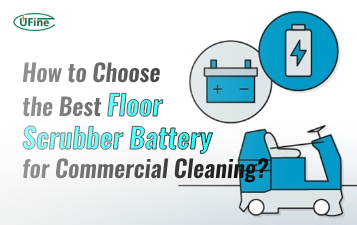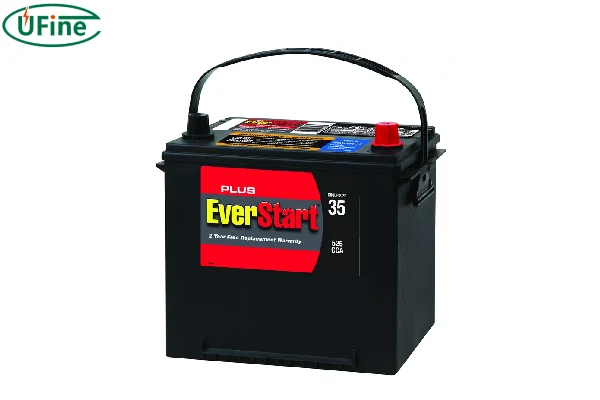When it comes to powering vehicles or certain equipment, the type of battery you choose can make a significant difference. One of the popular options is the group 35 battery. But what exactly does that mean, and why should you care? In this detailed guide, we’ll dive into everything you need to know about group 35 batteries. From their size and type to their various applications and benefits, we’ll cover it all. This way, you’ll be well-equipped to make an informed decision when it’s time to purchase a new battery.
Part 1. What does 35 mean on a battery?
The term “group 35” is more than just a random number. It actually refers to a specific battery size classification established by the Battery Council International (BCI). This organization standardizes the dimensions and specifications of batteries, ensuring that consumers can easily find the right fit for their needs.
So, what does the number 35 signify? Essentially, it defines the physical dimensions, terminal placements, and other key characteristics of the battery. This standardization helps users find compatible batteries for their vehicles or equipment, simplifying the purchasing process.
Part 2. Size
One of the first things to understand about group 35 batteries is their size. These batteries typically measure around 9.06 inches in length, 6.88 inches in width, and 8.88 inches in height. This standardized size ensures they can fit into the battery compartments of various vehicles and equipment without any issues.
This particular size is common in many car models, making group 35 batteries a go-to choice for automotive use. Knowing the exact dimensions also helps you ensure that the battery will fit snugly and securely in the designated space, reducing the risk of any installation issues.
Part 3. Type
Group 35 batteries come in several types, each with its own set of advantages and disadvantages. Understanding these types can help you choose the best battery for your specific needs.
- Flooded Lead-Acid Batteries: These are the most traditional and widely used type of batteries. They are known for being reliable and cost-effective. However, they do require regular maintenance, such as topping up the electrolyte levels and ensuring the terminals are clean.
- AGM (Absorbent Glass Mat) Batteries: These batteries are sealed and maintenance-free, making them a convenient option. They offer better performance and a longer lifespan compared to flooded lead-acid batteries. AGM batteries are also less prone to leaking and can handle higher electrical demands.
- Gel Cell Batteries: These are another type of sealed battery that requires no maintenance. They are designed to provide deep cycling capabilities, making them ideal for applications where the battery is frequently discharged and recharged. However, they tend to be more expensive than both flooded lead-acid and AGM batteries.
- Lithium-Ion: Maintenance-free, lightweight, with high energy density and long lifespan, though generally more expensive.
Part 4. Voltage
The standard voltage for a group 35 battery is 12 volts. This voltage is suitable for most cars, trucks, and light industrial applications. A consistent 12-volt output ensures reliable performance for starting engines and powering electrical systems.
The 12-volt standard means you can use these batteries for a variety of purposes, from automotive to marine applications. This versatility makes them a popular choice for many users.
Part 5. Capacity
Capacity is a crucial factor when choosing a battery. It is measured in ampere-hours (Ah) and indicates how much charge a battery can hold. Group 35 batteries typically offer a capacity range of 44 to 65 Ah. The higher the capacity, the longer the battery can provide power before needing a recharge.
A higher capacity is beneficial if you have a vehicle or equipment that requires more power. It means the battery can last longer between charges, providing more consistent performance over time.
Part 6. Chemistry
The chemistry of a group 35 battery can vary, affecting its performance, lifespan, and maintenance requirements. The most common chemistries include:
- Lead-Acid: These are the most traditional and cost-effective batteries. They are reliable and suitable for general use, but they require regular maintenance and have a shorter lifespan compared to other types.
- AGM: Absorbent Glass Mat batteries offer improved performance and a longer lifespan. They are also maintenance-free, making them a convenient choice for users who prefer not to deal with battery upkeep.
- Lithium-Ion: Though less common in this group size, lithium-ion batteries offer the highest energy density and longest lifespan. They are lightweight and require no maintenance, but they tend to be more expensive.
Part 7. Price
The price of a group 35 battery can range from $100 to $250, depending on the type and brand. Flooded lead-acid batteries are usually the most affordable, while AGM and gel cell batteries tend to be more expensive due to their advanced features and longer lifespans.
When considering the price, it’s important to factor in the battery’s lifespan and maintenance requirements. A more expensive battery may offer better value in the long run if it lasts longer and requires less upkeep.
Part 8. Application
Group 35 batteries are versatile and used in various applications, such as:
- Automotive: These batteries are common in cars, trucks, and SUVs for starting, lighting, and ignition (SLI) purposes. They provide reliable power to start the engine and run the vehicle’s electrical systems.
- Marine: Group 35 batteries are used in boats for both starting engines and running onboard electronics. Their reliability and capacity make them a popular choice for marine applications.
- RV and Camper: These batteries are ideal for recreational vehicles, providing power for appliances and accessories. Their capacity and reliability ensure a comfortable and convenient RV experience.
- Backup Power: Group 35 batteries are suitable for use in uninterruptible power supply (UPS) systems and backup generators. Their consistent performance and reliability make them a dependable choice for backup power solutions.
Part 9. Which one is suitable for your application?
Choosing the right group 35 battery depends on your specific needs:
- Automotive Use: If you need a reliable, cost-effective option for your car, a flooded lead-acid battery is a good choice. For vehicles with high electrical demands, consider an AGM battery.
- Marine and RV Use: AGM or gel cell batteries are ideal due to their deep cycling capabilities and maintenance-free design. They can handle the demands of marine and RV applications, providing consistent power and reliability.
- Backup Power: For UPS systems or backup generators, an AGM battery offers reliability and long life. Its maintenance-free design and consistent performance make it a dependable choice for backup power solutions.
Related Tags:
More Articles

How to Choose the Best Floor Scrubber Battery for Commercial Cleaning?
Selecting the ideal floor scrubber battery ensures a long runtime, rapid charging, and minimal maintenance for efficient commercial cleaning operations.
Battery for Blower vs Battery for Leaf Vacuum: Which One Should You Choose?
Battery for blower vs leaf vacuum—learn the key differences in power, fit, and runtime to choose the right battery for your outdoor tool needs.
How to Choose the Right Battery for Blower?
Choosing the right blower battery? Consider voltage, capacity, chemistry & usage. This guide helps match the best battery for peak performance.
How to Choose the Best Insulated Battery Box for Lithium Batteries?
Choosing the Best Insulated Battery Box for Lithium Batteries? Discover key factors such as size, material, and safety for optimal protection and performance.
7 Critical Elements on a Lithium Battery Shipping Label
What must be on a lithium battery shipping label? Learn 7 key elements to ensure safety, legal compliance, and correct handling across all transport modes.





